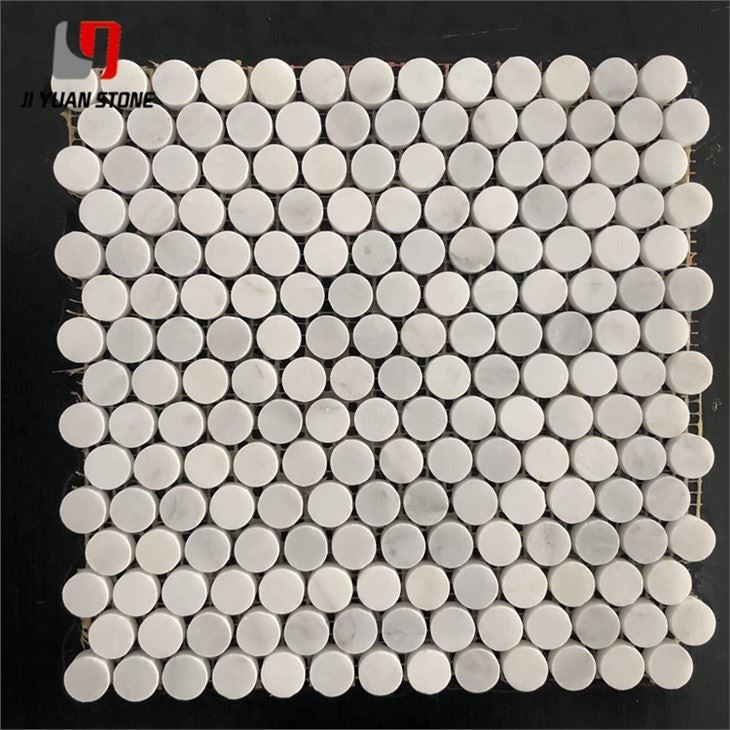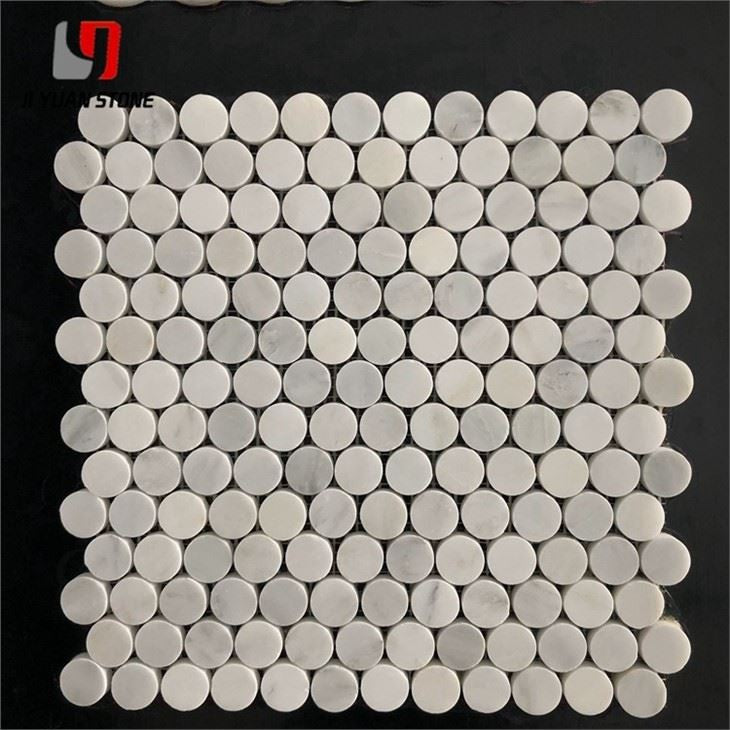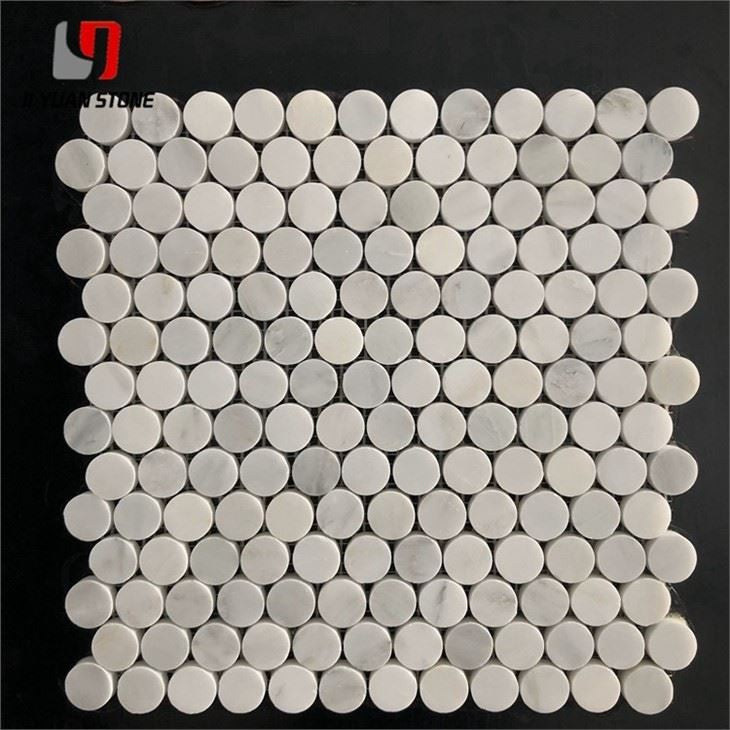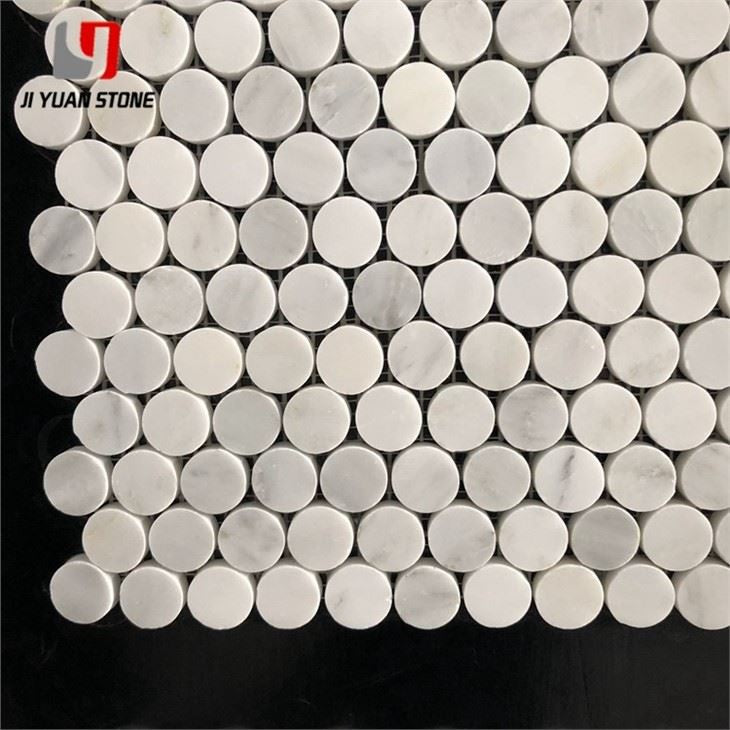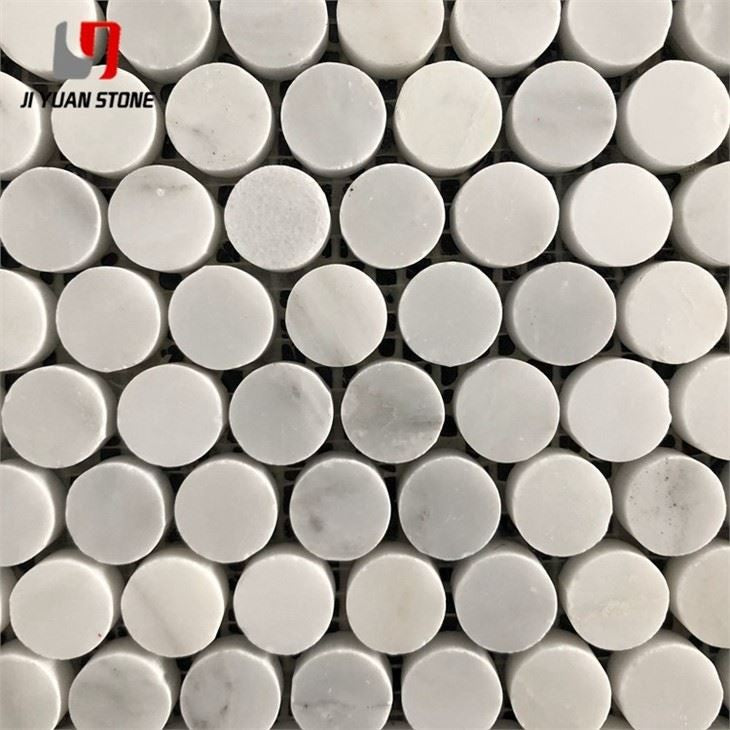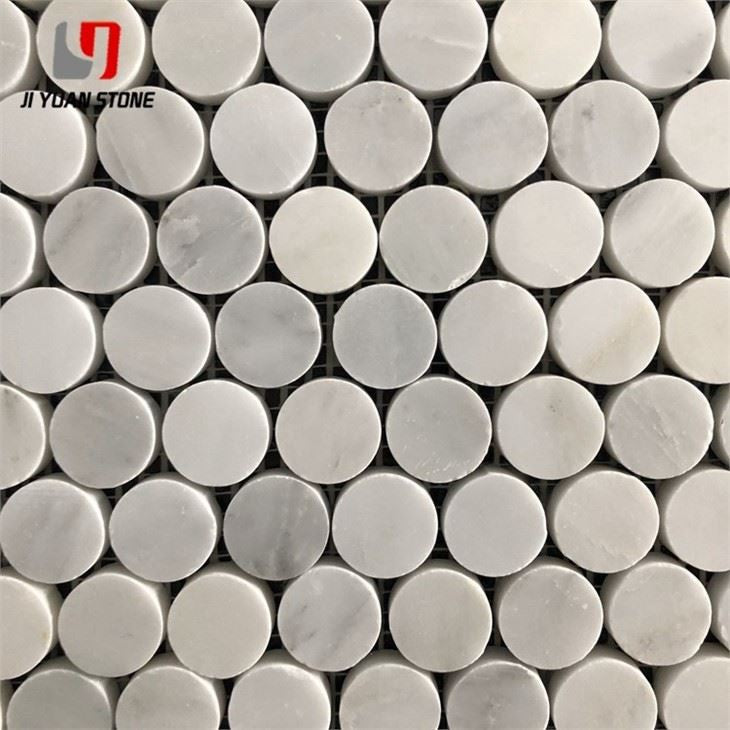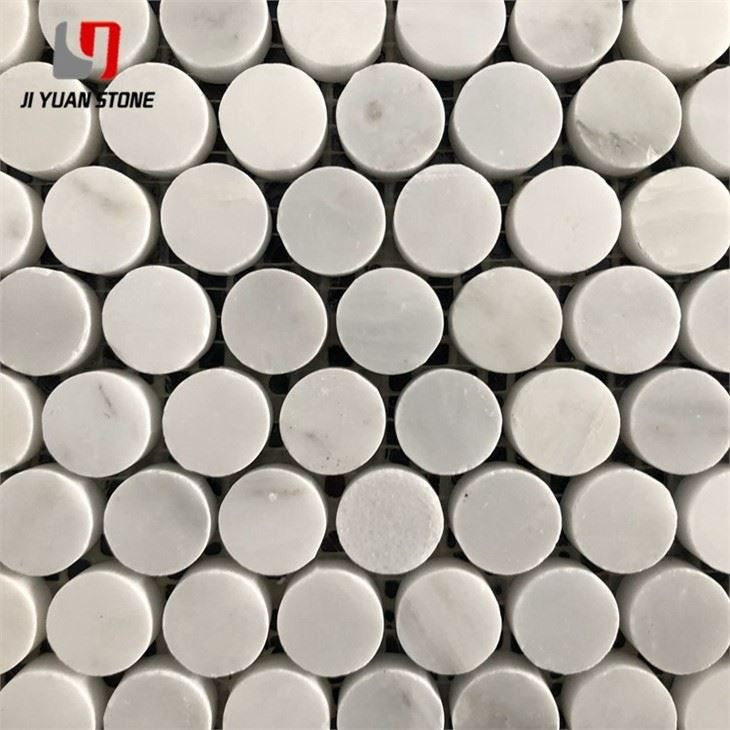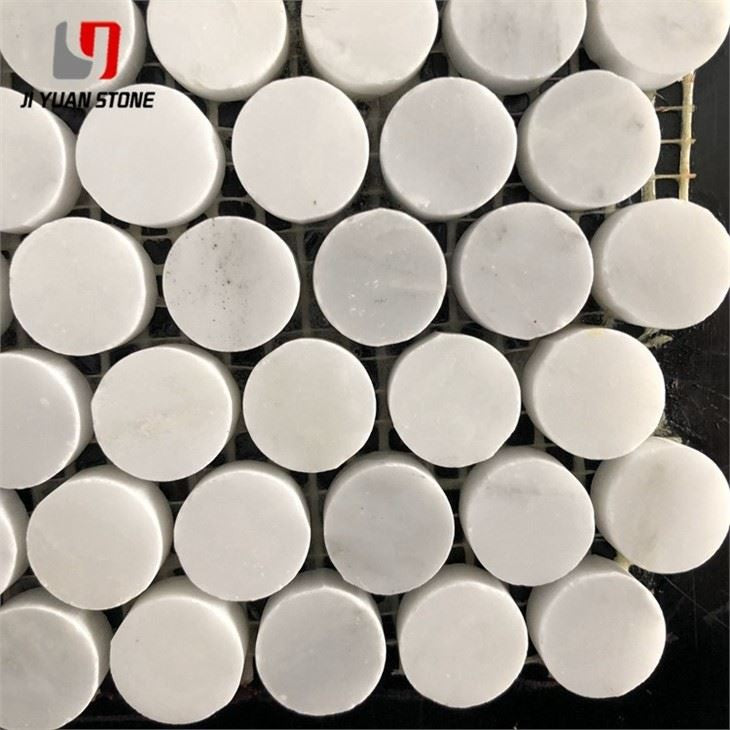Round Marble Mosaic Tile
Round Marble Mosaic Tile
This Round Marble Mosaic Tile is a durable and elegant addition to any space. Made of high-quality marble, it offers a classic and timeless look that will elevate the aesthetic of any room. Its round shape and mosaic pattern add a touch of sophistication and style.
| Feature | Details |
|---|---|
| Material | Natural Marble Stone,Travertine,Limestone |
| Colour | As pictures show or customized |
| Shape | Square, Basketweave, Mini brick, Modern brick, Herringbone, Subway, Hexagon, Octagon, Mixed, Grand fan, Penny round, Hand clipped, Tesserae, Random strip, River rocks, 3D cambered, Pinwheel, Rhomboid, Bubble round, Circle bubble, Stacked, etc... |
| MOQ | Unrestricted |
| Sheet Size | 279x295mm , All sizes can be customized |
| Chip Size | 48mm |
| Material | Natural Marble |
| Surface Finishing | Polished / Honed |
| Color | White |
| OEM&ODM | Accepted, different designs can be customized |
| Usage | Interior & exterior commercial and residencial Decoration, Kitchen,Bathroom ,Livingroom, etc. |
| Packing | Carton + Wooden Crate |
| Usage tips | 1.Marble tiles: Grout these tiles after drying the laying mortar / adhesive with a natural stone-suitable, polymer-coated joint ingenuity for absorbent materials. |
The Evolution of Round Marble Mosaic Tile in Art History
Middle Ages: The Byzantine Period (400–700 AD)
After the legalization of Christianity, the use of round marble mosaic tile expanded significantly, reaching an unprecedented level of artistic expression. Byzantine churches were richly adorned with mosaics, featuring an increasing variety of colors.
To display their immense wealth, Roman nobles developed an extravagant technique—burning gold leaf onto transparent glass. This led to the rise of gold-leaf mosaics, which first appeared in Sicily during the ancient Roman period. Byzantine mosaics ranged from brilliant gold and blue to deep black, utilizing discarded colored mosaic glass to create dazzling effects through transparent glass layers.
With the evolution of Byzantine art, frescoes became more refined and colorful, defining the artistic style of the era. As a result, Byzantine art became nearly synonymous with mosaic craftsmanship, marking the golden age of mosaic history and the pinnacle of mosaic art sophistication.
Iconic Byzantine Mosaic Works
The Christian themes in Byzantine mosaics, such as:
- "Christ Being Baptized in the Jordan River"
- "The Good Shepherd"
remain well preserved today. Additionally, Byzantine mosaics often included portraits of emperors and queens. A prime example is found in the Church of San Vitale, where the presbytery depicts Justinian I and Empress Theodora. The grandeur of these mosaics, especially in Ravenna, earned it the title "Mosaic Capital".
Materials Used in Byzantine Mosaics
- Glass Mosaic
- Stone Mosaic
Renaissance (14th–16th Century): The Transition from Mosaic to Perspective Art
During the Renaissance, round marble mosaic tile played a unique role in preserving artworks. However, as painters developed techniques in perspective, they emphasized spatial depth and three-dimensional structure, creating a breakthrough in two-dimensional art.
At this time, mosaic materials, such as round marble mosaic tile, were not ideal for achieving realistic depth. Unlike painting, mosaics struggled to capture the illusion of three-dimensionality, making it difficult to align with Renaissance artistic goals.
As a result, the rigid and dramatic nature of mosaics became a creative limitation for artists. Those engaged in mosaic art found themselves restricted by the medium, leading to a decline in its popularity as painting flourished.
Share
